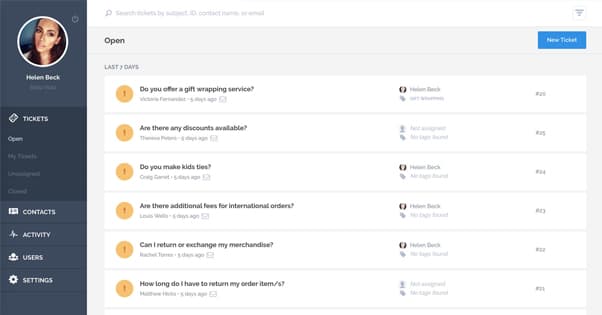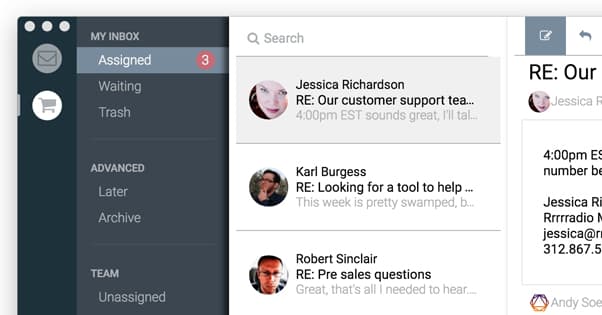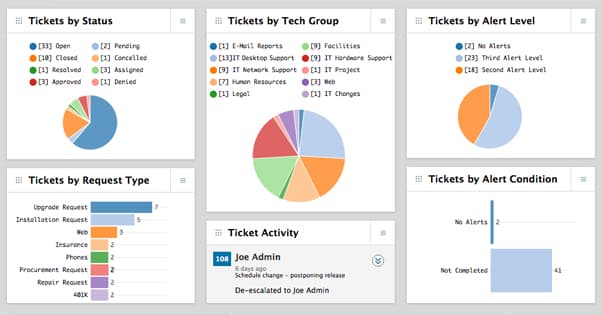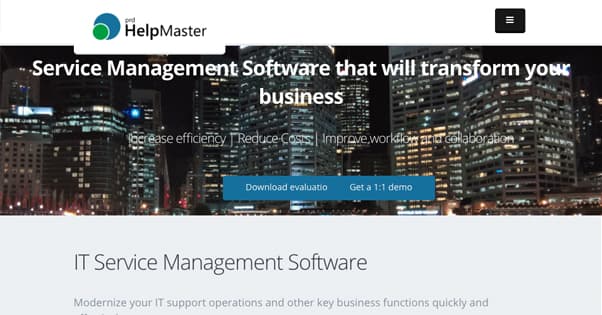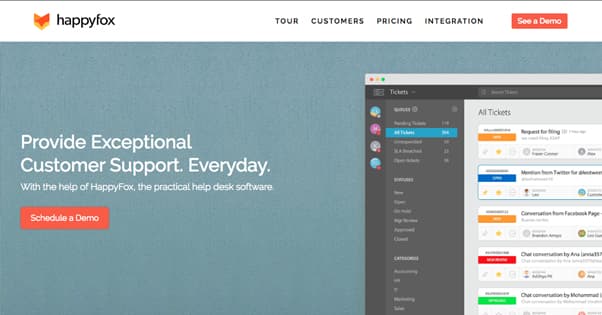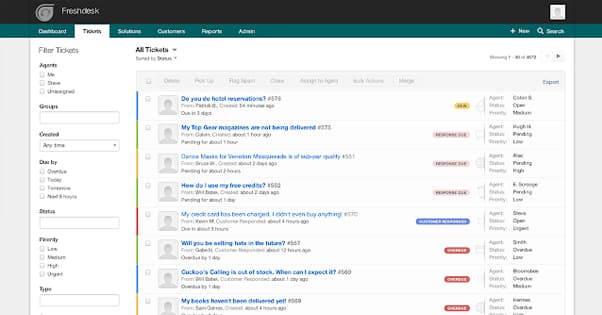How to Convert Your New Emails into Help Desk Tickets

Operating a business means keeping things organized. Seriously, never underestimate the power of organization. Trying to keep random lists on different devices and notepads, keeping half your task list in your head, it’s bound to come crashing down.
One way you can add some organization to your business is by adding a ticketing system to help handle incoming tasks and, more importantly, customer service. Nothing is worse for a customer or for a business than letting a support issue slip through the cracks. With a ticketing system, you can assign priorities, handle tickets in the order they come in, and satisfy everyone as equally as possible.
How can you convert incoming emails into support tickets? There are a lot of different ways, many of which involve investing in a ticketing system itself. Let’s look a bit deeper.
The Benefits of Email to Ticket Conversion
I’ve already mentioned organization as a huge benefit to establishing a ticketing system. It’s not the only benefit, though, and it might not even be the biggest benefit if you’re already relatively on top of things with your company.
A second benefit is accessibility. A ticketing system shows that your business – or your support team specifically – is available to work on whatever problems come up. Most ticketing systems, when they create a new ticket, can send an automatic response to the sender of the message. The user known almost immediately that their communication went through and that someone will be looking at it as soon as possible. That’s a lot better than someone complaining on Twitter and fishing for a DM from the support rep, or sending an email into the void.
It’s also an alternative means of obtaining support. There are so many different ways to contact a business these days that it can be annoying to a customer when their preferred method is not available. If you prefer calling support, a brand not listing a phone number might be a deal breaker. The same goes for email, or live chat, or a support forum, or any other means of support. The more options you give your users, the more comfortable they will feel navigating the system of their choice.
Ticketing systems also allow you to monitor your support team’s performance through various metrics ranging from ticket response time to completion time to volume completed. I will urge you to exercise caution with this, however. More than one business has seen their support team collapse and their institutional knowledge disappear when a manager starts focusing more on KPIs than on results.
It’s hard to overstate the value of efficiency and the cost-effective nature of ticketing. A good ticketing system lets a decent manager ensure all of the support team members are working on something appropriate to their skill level at any given time, handling customer issues as effectively as possible.
Also, and this is a big one, a ticketing system scales. Even if you’re a small business and can handle everything with email management right now, you’re trying to grow your business. That means you’re going to reach a point where the volume of customer issues surpasses your ability to easily handle. Putting a ticketing system in place will be required sooner or later, so why not invest in it now?
Systems and Instructions
Most ticketing systems have a way to set up automatic filtering for email. They’ll scan emails that come in looking for common phrases, sources, or issues that indicate the communication is a support ticket, as opposed to spam email, communications meant for another department, inter-departmental messaging, or another kind of email. You can set up and customize these filters, and the incoming messages will be converted into tickets immediately. Any that make it through without being converted can be assigned manually, and new rules added to the filters if necessary.
Here’s a list of the systems I’ve found that allow email to ticket conversion automatically, as well as some information about those systems and instructions on how to set it up.
Keeping
Keeping is probably the most entry-level product you’re going to find for a ticketing system, because it’s only barely a ticketing system. What it is, is a plugin for Gmail that converts your inbox into a sort of makeshift ticket management platform.
This means a lot of things, but primarily it means that you need to be using Gmail for your business and support. That’s not a roadblock for a lot of people, since Gmail is so popular, and Gmail’s business features and extensions are pretty great. If you’re not using Gmail, though, I’d recommend skipping the rest of this section. Other systems will work better without requiring you to swap to Gmail to use them.
Keeping has a handful of useful features for managing support directly from Gmail. One of them is a canned email response system that you can set up to trigger based on keywords in the incoming support. This can be useful for handling simple and repetitive requests, like password resets, but might leave users with tricky or complicated problems more frustrated. The system also tracks information about incoming and outgoing support, to help find consistent problems or issues that keep cropping up.
Other features include collaboration, the ability to assign messages like tickets to individual users, internal note systems to pass information from one agent to the next, ticket status management and receipt confirmation, and collision detection to prevent multiple agents from picking the same ticket to handle.
Keeping isn’t free, but then, neither are most ticketing systems. They have a $15 per month plan that includes one shared inbox, up to three users, and priority support. For more users and more mailboxes, you can bump up the plan. $30 per month gets you five users and unlimited mailboxes, while $50 per month makes users unlimited as well. Pretty ideal, as long as you meet the minimum requirement of using Gmail and the GSuite platform for your business.
HelpMaster
HelpMaster is primarily aimed at IT support for businesses both large and small, but it can handle just about anything you throw at it. It’s a general ticketing system for both internal and external support. It has a desktop edition, a knowledge base system, and asset management to keep your various essential resources on hand for your support team.
Beyond that, the system has a workflow and template system, a job monitor, and reporting. Setup with a theme builder and a database wizard are also included. All of that comes with the small business version for $21 per month. Unfortunately, for email to ticket conversion, you need to bump up to at least the $41 per month version. That gets you email conversion, SLA automation, and integration with Active Directory. For full unlimited conversion, as well as a client web portal and billing system, you need the $54 per month version.
Note that these prices are per agent, so the more support agents you have, the more licenses you need. On the plus side, licensing only charges you based on how many agents are concurrently logged on. You only pay for what you use.
You can read more about their specific implementation of email to ticket conversion in this page. It’s aimed at selling you the service more than educating you about it, but it’s still a good description.
HappyFox
HappyFox is another option for a ticketing system that includes a way to convert emails into support tickets. First, though, let’s talk about features and pricing.
First up, you’ll notice that the Fox is cloud-based, meaning you don’t need to have your own server and networking setup just to run it. The web interface does require you to have an active internet connection to manage tickets, but given that we’re talking about email support, that’s pretty much a given. It works on mobile devices, which a lot of ticketing systems are a bit behind the times with, so that’s a good benefit for some businesses. It also connects with a variety of existing business apps, like SalesForce, Jira, and Magento.
HappyFox has four different plans. The basic plan has contact imports, macros, collision prevention, SLA management, time tracking, a knowledge base, forums, brand tracking, and the usual slate of web-service features like a dashboard and data exports. In fact, it’s almost easier to mention the features it doesn’t have.
Specifically, the basic plan lacks surveys, custom ticket queues, task management, sentiment analysis, dashboard customization, password policy management, and some advanced integrations. It’ll cost you $30 per agent per month with a minimum of three agents. Already, you can see how the HelpMaster pricing works out as a unique selling point.
Higher tier plans add some more advanced features, but as far as I’m aware, email to ticket conversion is included in all versions. You essentially pay for advanced integrations, some high end features, and better support. Costs scale up to $100 per agent per month, depending on your needs.
As far as actually using HappyFox to convert emails into tickets, it requires you to use one support inbox. If you have support@company.com, for example, you can use it as an input. Incoming emails are routed into specific tickets, and different paid plans allow you to file tickets into different categories or just one general queue.
What you need to do is create a category for your tickets, then set up a forwarding rule between your support inbox and the included HappyFox mail server. They have instructions on how to do this in their support system here.
FreshDesk
FreshDesk is one of the most common small business ticketing systems out there. You may have seen it on the list of help desk software tools I covered a while back, since it’s free. It’s a great platform, albeit a bit of a limited one.
FreshDesk has an array of different business management features. It does collaboration, mutli-channel support, automation, reporting, and, of course, ticketing. The best part is that email to ticket conversion is one of the basic features included with the free plan, so it’s not even charging you extra for a basic support tool. Custom email servers and more advanced ticketing features cost money, but not basic email channel support. Phone, social, and chat channels are included as well.
The system uses a pretty decent method for email channel support. For one thing, when you register, you’re given an email address that looks like support@company.freshdesk.com. You can use that email address directly, and anyone emailing it for support will have a ticket created for them automatically.
If you already have your own support@company email address, you can still use it as well. All you need to do is the same sort of email forwarding as mentioned above. In the FreshDesk admin page, in the email channel, you can specify the support email you use and set it up as a source, so everything is labeled correctly. Then simply forward your support emails from one inbox to the other, and they will be converted into tickets. You can, of course, read more instructions on how to do this here.
Alternatives
I’ve only listed a couple of options for a variety that most businesses can use. There are plenty of others out there. For example:
ServiceDesk Plus by ManageEngine has email to ticket support using email forwarding, though it needs to be configured and may be a bit trickier than other options.
Jira Service Desk has their own system as well. It’s very easy to set up, but doesn’t have a lot of advanced filtering or automatic response features by default.
FreshService, not to be confused with FreshDesk or ServiceDesk, has its own channel.
The fact is, almost every ticketing system will accept email as a channel. Some will charge extra for it, some allow it for free, but they pretty much all support it. After all, email is the second largest channel for support after phones, and some businesses it’s the majority. You can’t afford to let it languish.


